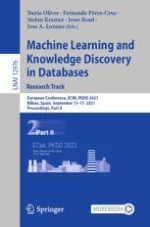2021 | OriginalPaper | Chapter
PATHATTACK: Attacking Shortest Paths in Complex Networks
Authors : Benjamin A. Miller, Zohair Shafi, Wheeler Ruml, Yevgeniy Vorobeychik, Tina Eliassi-Rad, Scott Alfeld
Published in: Machine Learning and Knowledge Discovery in Databases. Research Track
Publisher: Springer International Publishing
Activate our intelligent search to find suitable subject content or patents.
Select sections of text to find matching patents with Artificial Intelligence. powered by
Select sections of text to find additional relevant content using AI-assisted search. powered by
Abstract
PATHATTACK algorithm, which via constraint generation considers only a small subset of paths—at most 5% of the number of edges in 99% of our experiments. Across a diverse set of synthetic and real networks, the linear programming formulation of Weighted Set Cover yields the optimal solution in over 98% of cases. We also demonstrate running time vs. cost tradeoff using two approximation algorithms and greedy baseline methods. This work expands the area of adversarial graph mining beyond recent work on node classification and embedding.